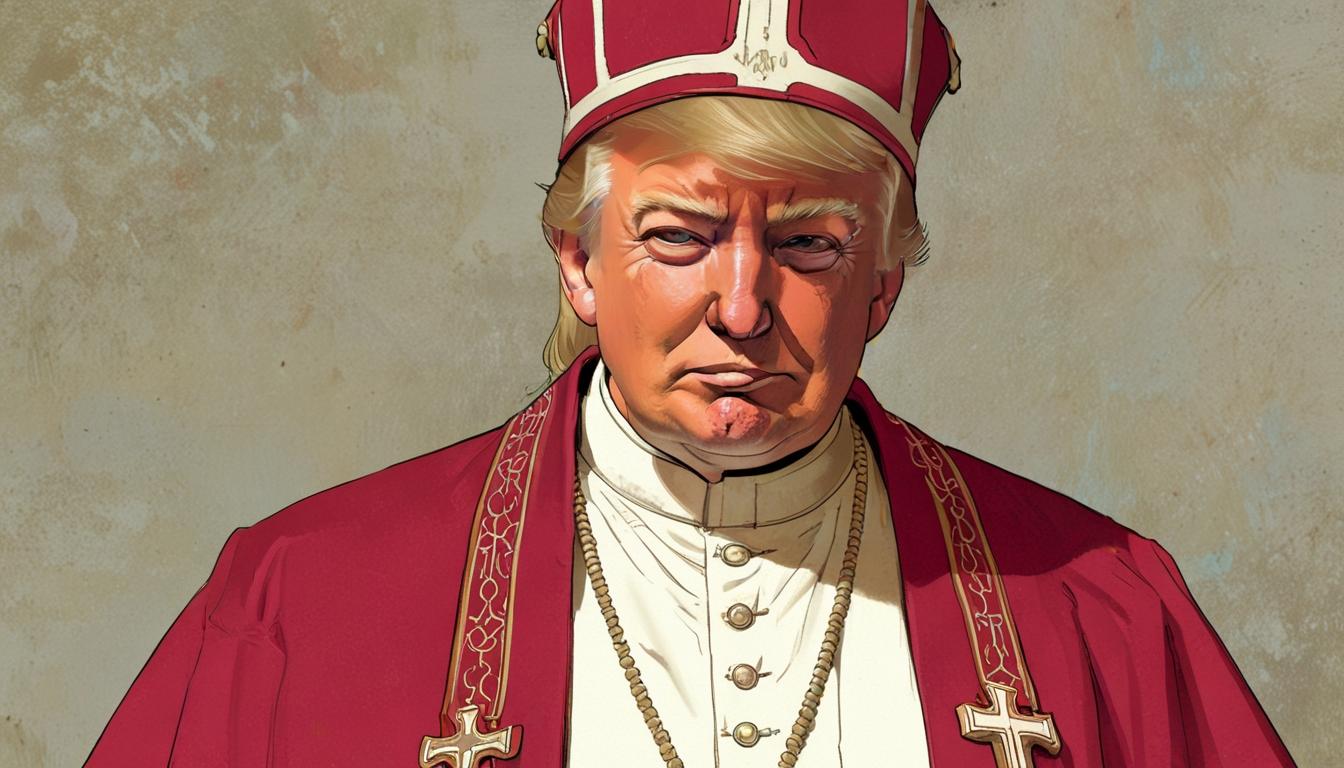David Tennant's recent quip during a broadcast of Have I Got News for You has ignited debate around the intersection of politics, religion, and technology. The former Doctor Who star took aim at Donald Trump after the ex-President shared an AI-generated image of himself clad in papal attire across social media platforms, including Truth Social and the White House’s official account. The image, which prominently features an unsmiling Trump in white vestments, has since stirred reactions from various sectors, particularly within the Catholic community.
During the episode aired on 9 May, Tennant cleverly remarked, “There was quite a week for the Catholic Church as they got a new Pope and a new antichrist.” This biting comment highlights not only Tennant's comedic prowess but also the absurdity of Trump's post, which has been condemned by numerous Catholic leaders. For instance, Cardinal Timothy Dolan expressed concern over the blurring line between jest and disrespect, particularly during a time of mourning for Pope Francis. The New York State Catholic Conference further urged Trump to refrain from mocking the Church, given the sensitive context surrounding the recent papal conclave.
The discussions surrounding this fictitious portrayal of Trump as the Pope underscore a growing concern regarding the implications of AI technologies in generating realistic images and potential misinformation. Experts have pointed out that AI's capacity to create plausible yet entirely fabricated content can easily mislead the public. This dilemma is compounded by rapid advancements in AI, with capabilities that can produce images so authentic-looking that identifying their true nature becomes increasingly difficult.
Indeed, the image of Trump in papal garb is not an isolated incident. It reflects broader trends in the digital landscape, where figures like the Pope have been depicted in various outlandish scenarios, including the notable example of an AI-generated Pope in a puffer jacket. As the boundaries of reality and digital fabrication continue to blur, the need for critical media literacy becomes more pressing. Individuals are urged to develop the skills necessary to assess the authenticity of digital content, especially as the sophistication of AI-generated images advances.
While Trump’s post may have been intended as lighthearted or provocative, it raises important questions about the responsibility of public figures in an era where misinformation can proliferate unchecked. As discussions unfold about the role of AI in shaping perceptions, the importance of discernment in evaluating online imagery and narratives cannot be overstated. What may have started as a satirical jab from Tennant now serves as a commentary on the evolving discourse surrounding technology, ethics, and faith.
Reference Map
- Paragraph 1: Sources 1, 3
- Paragraph 2: Sources 2, 3
- Paragraph 3: Sources 4, 5
- Paragraph 4: Sources 6, 7
- Paragraph 5: Sources 2, 3, 4
Source: Noah Wire Services
